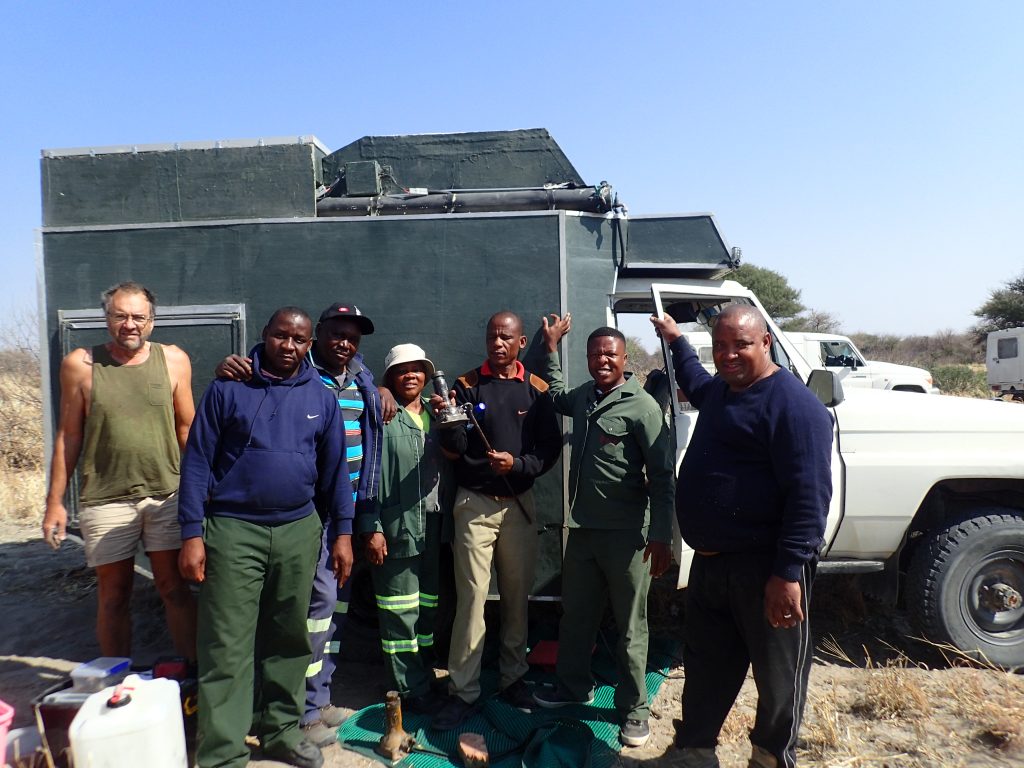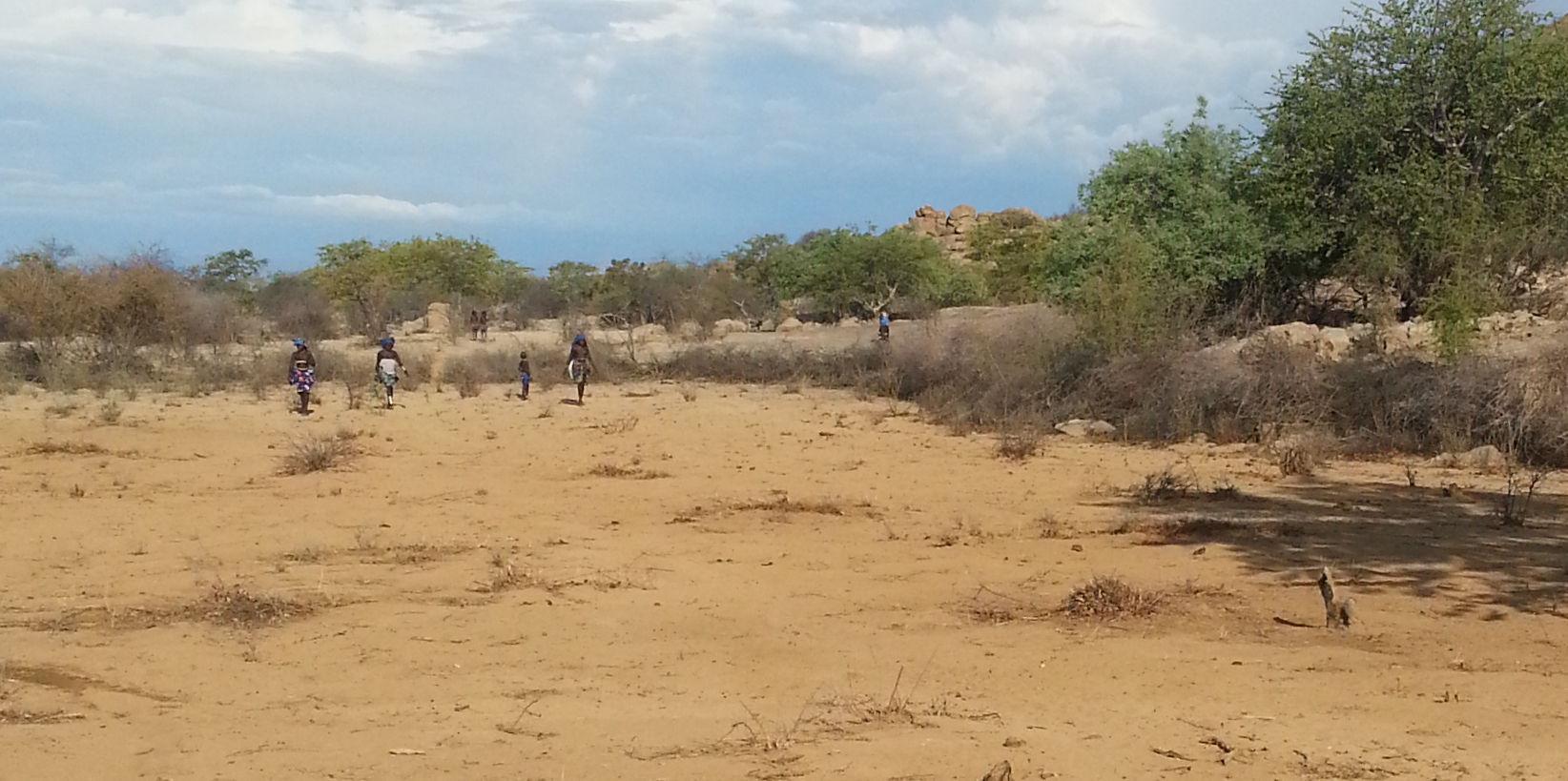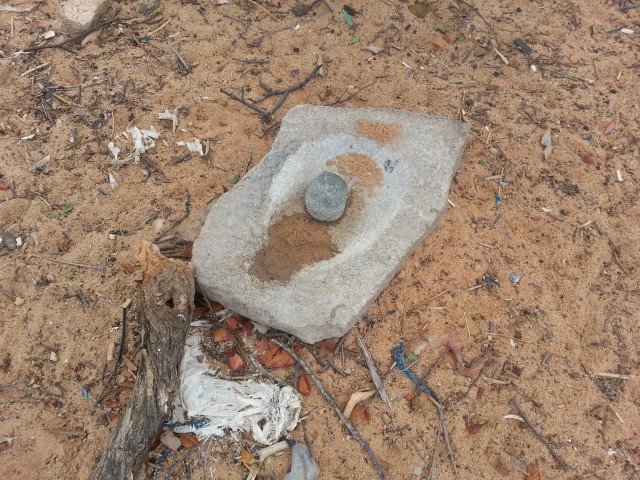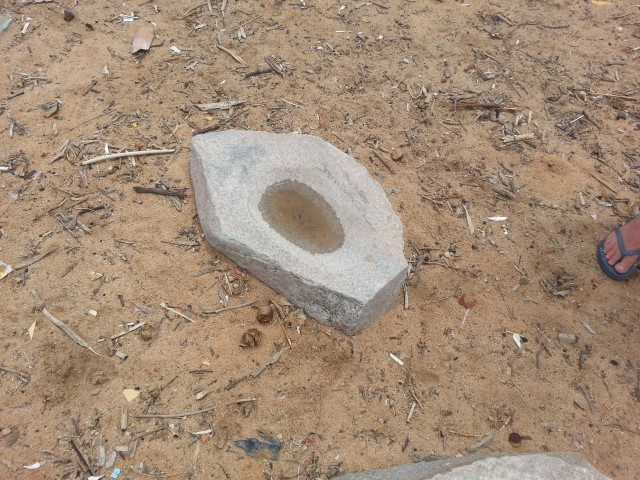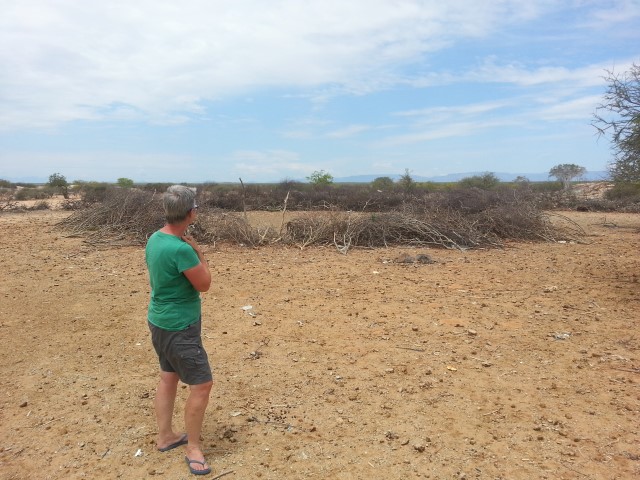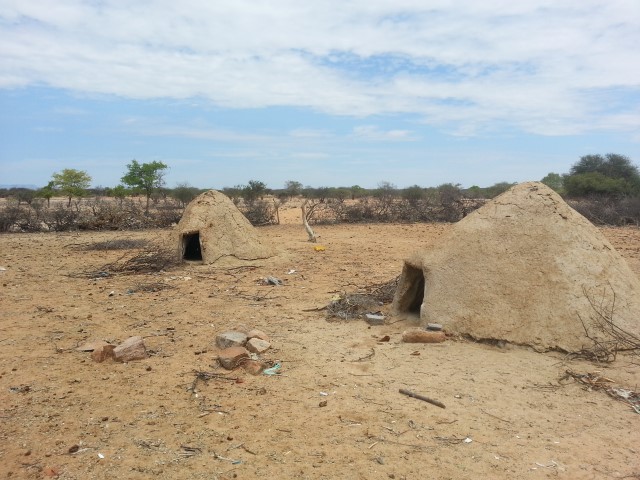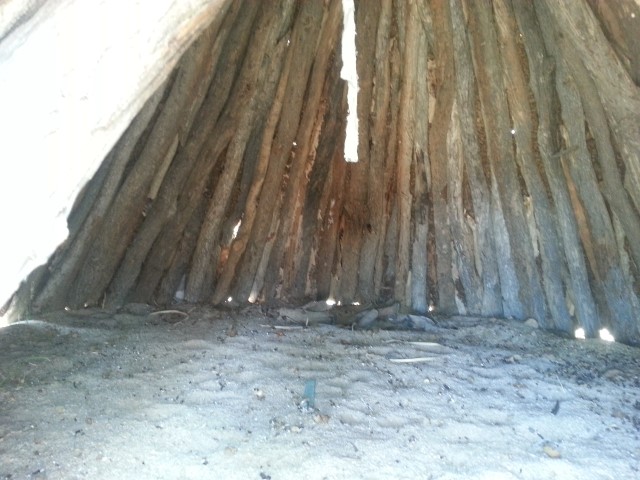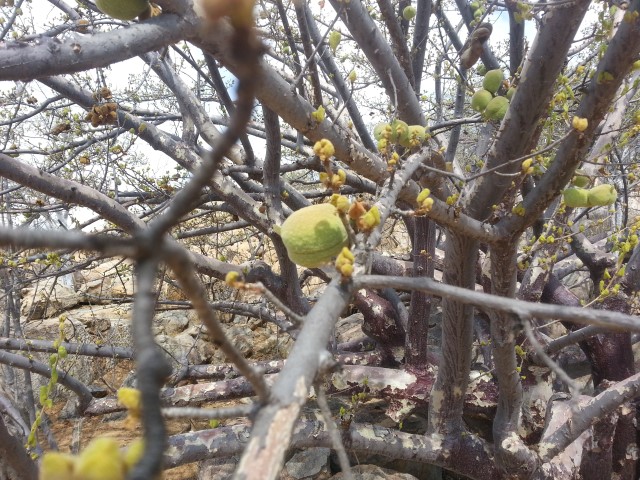(aka – We drove across the Kalahari Desert in 2WD and got another flat tyre)
We spent our last night in the CKGR at Deception Camp 1, then set out on Wednesday morning to drive out of the Reserve, get back on the sealed road at Rakops and head south towards Orapa. We got a mere 6kms down the track when Tyre Dog pressure monitoring system started letting us know that we had a puncture.
Damn.
So we pull over to a clear flat spot off the single vehicle-width track, grab our 2 jacks and other tyre-fixing stuff and get on with it.
Just as Greg was getting the first jack underneath, 2 government Landcruiser utes stopped. I thanked them for stopping, explained that we had a flat tyre but we were okay and thought they would just keep on driving, but they pulled both vehicles off the track and all 6 passengers got out to assess the situation. Within seconds the 2 drivers were on the green mat-covered ground with Greg, sussing it all out. Someone got a jack from one of the utes, so we had 3 jacks, and they got to work.
The group works for a mobile health unit, based in Ghanzi. They had visited the 2 lodges within the Reserve and were on their way to a clinic in Rakops. There were 2 Health Care workers including Registered Nurse Onalethata Matsenkule who trained in Melbourne and lived in Australia for 9 years. He has even visited Adelaide! In addition to the 2 drivers, there was a mechanic and a female assistant mechanic.
We had an almost heart-stopping moment when one of the drivers moved out from under Clancy a split second before the jack collapsed in the soft sand, but otherwise it all went smoothly. I chatted with Onalethata while Greg and the men replaced the tyre. I showed off Clancy’s interior, the guys chatted about how fantastic 1H and 2H Toyota engines are, then Greg showed them the electrical features of the camper. We gave the group a 6-pack of Sahara Cider, thanked them all profusely and waved them off to get to their health clinic.
The rest of our drive out of the Reserve was uneventful, although the last part of the unsealed road back to the B300 sealed road near Rakops was the worst of the whole CKGR route.
We pulled off the road at the turn-off to Rakops and had a very late lunch. Just as we were finishing, a government car pulled up beside us ….. it was our friends the drivers and health workers! We were happy to see them and let them know that the rest of our drive out of the park was fine.
It was such a lovely experience, meeting this group of friendly, helpful locals. Shame about the tyre – we’re up to 5 punctures for this trip so far. Hopefully not on track to match Season 1’s tally of 10 punctures and 2 blow-outs.

